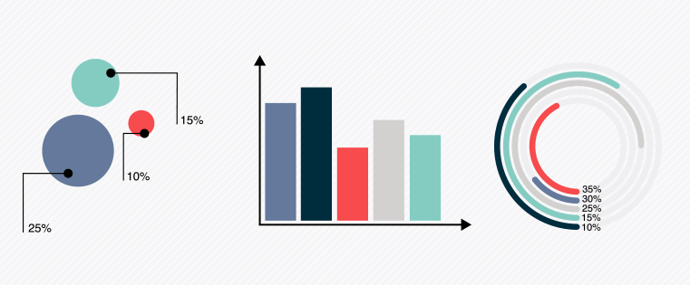

Everywhere you look in marketing you hear the term “KPI” being thrown around. With more and more ways to measure activity, it seems everything has a KPI now. Just the other day I found myself discussing my 2-year-old’s preschool KPIs. And how often do you sit in a meeting and see that a project has dozens of KPIs? Just because you can measure it doesn’t make it a KPI, nor does it mean that it’s even the thing you wanted the customer to do in the first place. After all, by its very definition, not everything can be “key.”
Here's a brief refresher: Good key performance indicators are simple, timely, critical to the success of a project, and not financial in nature. But you also need to add in one thing if you want it to be a successful marketing metric -- it must represent a key behavior you wanted to see. Look at your campaign and ask yourself: What’s the behavior I want to influence, not just something I can measure?
A key customer behavioral indicator for a marketing program is essential to success, and knowing the difference is really important. Let’s look at two examples:
Client A: A major brand of tires runs a weather-triggered search and display campaign. When it starts snowing in a local area, customers looking for information about the weather are presented with a message about how their brand of tires helps them be safer. The call-to-action is to learn more about these tires with stories from owners.
Client B: A coffee shop chain runs a weather-triggered search and display campaign. When it starts snowing in a local area, customers looking for information about the weather are presented with a message about how they can warm up with their signature hot chocolate or mocha.
For both of these campaigns, you’d typically see impressions, clicks, click-through rate, cost per click, and sales as the “key performance indicators” for the campaigns.
But are those really the KPIs that you should be measuring? Think about what you want the customer to do as a result of the campaigns. What’s the behavior you want to influence? Client A actually has a much different set of KPIs than Client B.
Client A’s campaign is more about brand building: Get the customer to see the ad, click through or search to visit your website, and read about how your product can help them overcome the weather obstacle. None of the metrics above are typically used to indicate successes that are actual indicators of that behavior. Instead, you should be looking at the number of customers who are exposed to the ad and who visit the site long enough to read some of the customer stories. Track both the number of stories (using event tags for “unique story open”) and how far down the story they got (using anchor tags). Even better, utilize your data management platform to identify those who have not only read the stories, but ended up purchasing the tires down the road.
Client B’s campaign is more about immediate sales: Get the customer to see the ad, consider how much they would love a mocha or hot chocolate, and think “that does sound good right now.” They don’t click; they don’t visit your website. They just go to their closest location. Utilizing a historical weather database placed on your historical sales, you should quickly see if you have a significant increase in sales with the weather trigger campaign running, versus times that you didn’t.
You don’t need everything else just because you can measure it. Sure, there’s an argument for media efficiency, but those are secondary to how well you influenced human behavior. In my experience, I’ve seen times when “less efficient” media buys yield higher sales results because you had to reach a higher-quality audience.
As an industry, let’s make an effort to measure the behavior the brand wanted to influence in a customer. This will bring more value to the company by helping its team understand what can influence meaningful brand interaction long term versus who simply clicks a banner ad.
In the meantime, I’ll be working to figure out why my 2-year-old’s “coloring-firetrucks-inside-the-lines” KPI is 17% below the normalized industry average. As industry professionals, it falls on us to help brands distinguish between what is a KPI and what is just a PI.